What is Islam? It is not only a ritual component, for instance, fivefold salah or nikah, hajj and annual fast. It is also beautiful, unique and multifaceted culture embracing the whole world. And today we will touch upon the fact of what Islamic architecture is.
Islamic architecture is one of the most famous building traditions in the world. This special approach, known for its bright colors, rich patterns and symmetrical silhouettes, has been popular in the Islamic world since the VII century. Islamic architecture covers a wide range of both secular and religious architectural styles from the founding of Islam to present days, influencing the design and construction of buildings and facilities in the field of Islamic culture.
While Islamic architecture includes several styles in different countries and continents, there are certain characteristics, which remain widespread everywhere. Recognition of these fundamental elements and understanding of their geographical distribution, are the key to understanding the visually sensational and historically significant style.
What is Islamic Architecture?
One can find this architectural tradition mainly in two kinds of places: countries with Muslim majority and lands conquered by Muslims in the Middle Ages. In addition to Arab states, such as Algeria, Egypt and Iraq, Islamic architecture is also spread in European regions with Moorish roots, including some parts of Spain, Portugal, Italy and Malta.
Although this approach is often associated with construction of Islamic religious places, it also manifests in other buildings, from palaces and public buildings to tombs and fortresses. However, religious or secular, this unspeakably beautiful style is defined by several common characteristics.
Minarets
A minaret is a spire or tower construction with small windows and closed staircase. It is one of the most ancient elements of Islamic architecture. The main function of a minaret is an opportunity for a muezzin to call upon believers from a high point to pray. It takes place five times a day: at dawn, at noon, in the middle of a day, at sunset and at night.
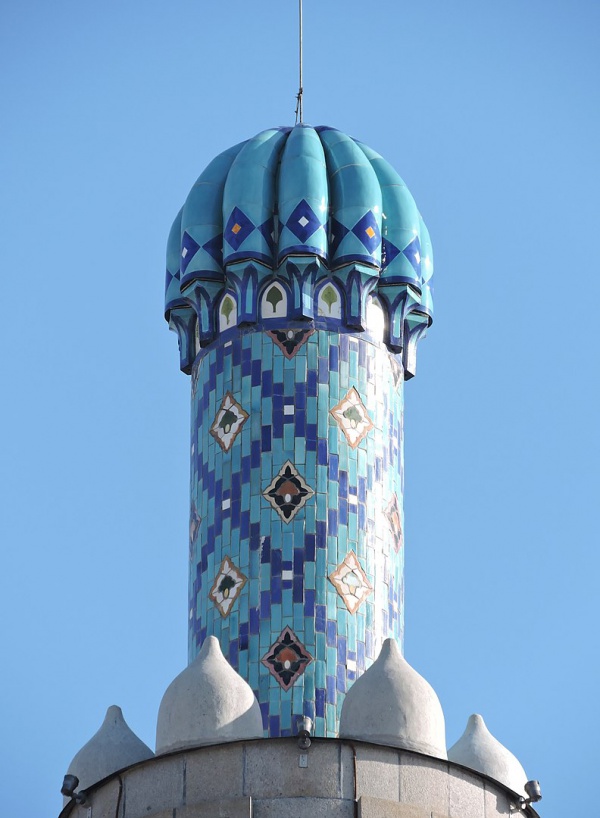
Minaret of the Cathedral Mosque of St. Petersburg/Creative Commons
Beginning from the XI century, some mosques have more than one minaret, which traditionally indicates that it was founded by a sultan.
Dome
Like many innovative architectural movements, including Byzantine and Italian Renaissance building traditions, Islamic architects also integrate domes into their projects.
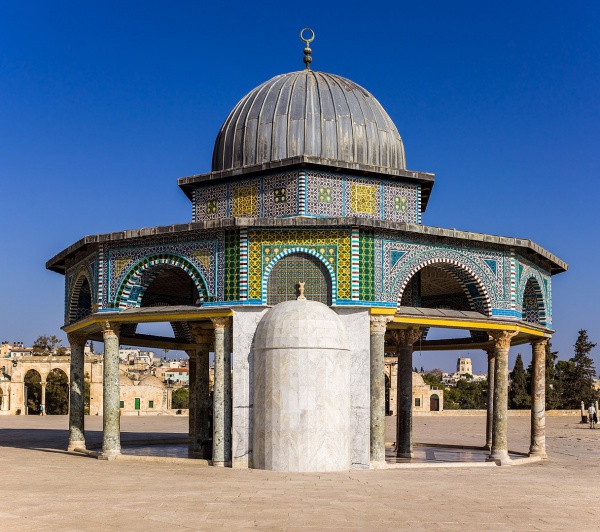
Temple Mount-Dome of the Chain south exposure, Jerusalem/ Creative Commons
The Dome of the Rock, the sanctuary of the VII century in Jerusalem, is the first Islamic building, where there is this architectural element. Inspired by Byzantine constructions, the octagonal building is crowned with a wooden dome covered with gold during the XVI century. Unlike the majority of Islamic domes that rely on pendulums, the dome stands on a drum supported by 16 pillars and columns. In Islamic architecture pendants are often decorated with tiles or muqarnas, a type of sculptural decoration.
Honeycomb Vaulting – Muqarnas
Because of their sculptural composition and patterned aesthetics, muqarnas are often compared to stalactites or honeycombs.
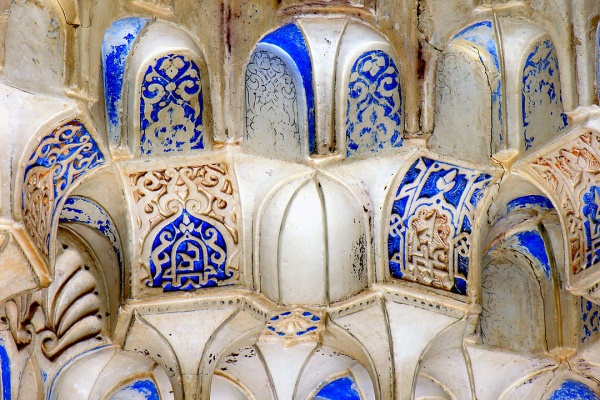
Fragment of the honeycomb vault in the Alhambra, Spain/Creative Commons
Arches
Arch is one of the attributes of Islamic architecture. Islamic arches, visible both in entrances and interiors of religious and cultural facilities, are divided into four main styles: pointed, ogee, horseshoe and multifoil.
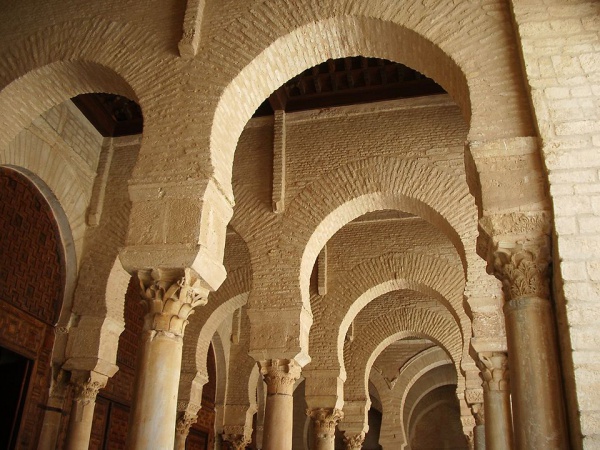
Arches in tne Great Mosque of Kairouan/Creative Commons
A pointed arch has a rounded design with a conical apex. This type of arches will eventually become an important element of Gothic architecture.
An ogee arch resembles a pointed arch. However, its tip consists of two s-shaped lines, ending with a more winding silhouette.
A horseshoe arch (also known as a keyhole arch) is associated with Moorish architecture. As its crown may be either rounded or pointed, this type of structure is designed to expand and narrow its sides.
Like a horseshoe arch, a multifoil arch is characteristic of Moorish architecture. This vault is distinguished by its multiple foils, or “leaves”.
Decorative details
The last element of Islamic architecture is attention to ornamental details. This generous approach to decoration, often reserved for interiors, includes precious tiles located in geometrical mosaic, patterned brickwork and kaleidoscopic stones, as well as exquisite calligraphic decorations.
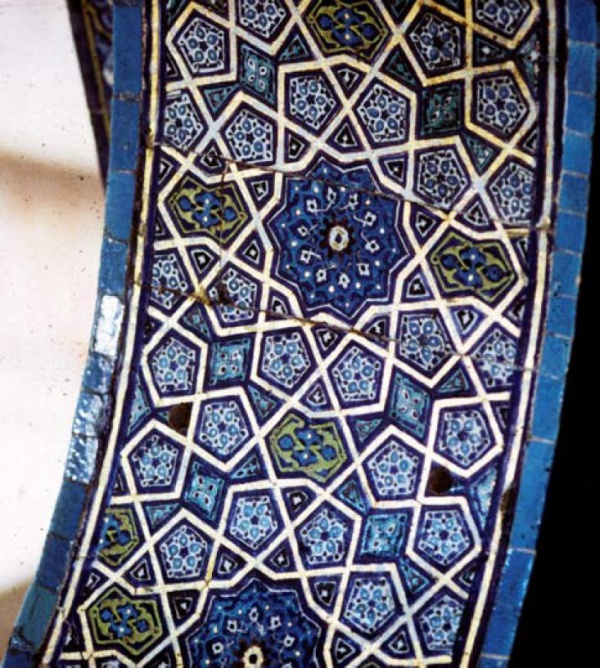
Detail of the Green Mosque, Bursa, Turkey/Public Domain
Along with monumental domes, breathtaking muqarna vaults and characteristic arches, these attractive ornaments demonstrate the transcendent nature of Islamic constriction practice.
Calligraphy
There are two main scripts in traditional Islamic calligraphy – angular Kufic and italic Naskh.
Kufic writing is the earliest form believed to be created in Kufa, to the South of Bagdad. This calligraphic style was widely used during the first five centuries of Islamic teaching, as well as to create copies of the Quran, textiles and ceramics. There are eight different types of Kufic writing.
Beginning from the XI century Naskh writing gradually replaced Kufic calligraphy. Although the type of cursive writing had already been known in the 7th century B.C., the invention of Naskh is attributed to Ibn Mukula. He lived in Baghdad during the 10th century and who was also responsible for the development of another type of cursive writing, the thuluth. It is a style close to the Naskh, but differs in the performance of individual elements.
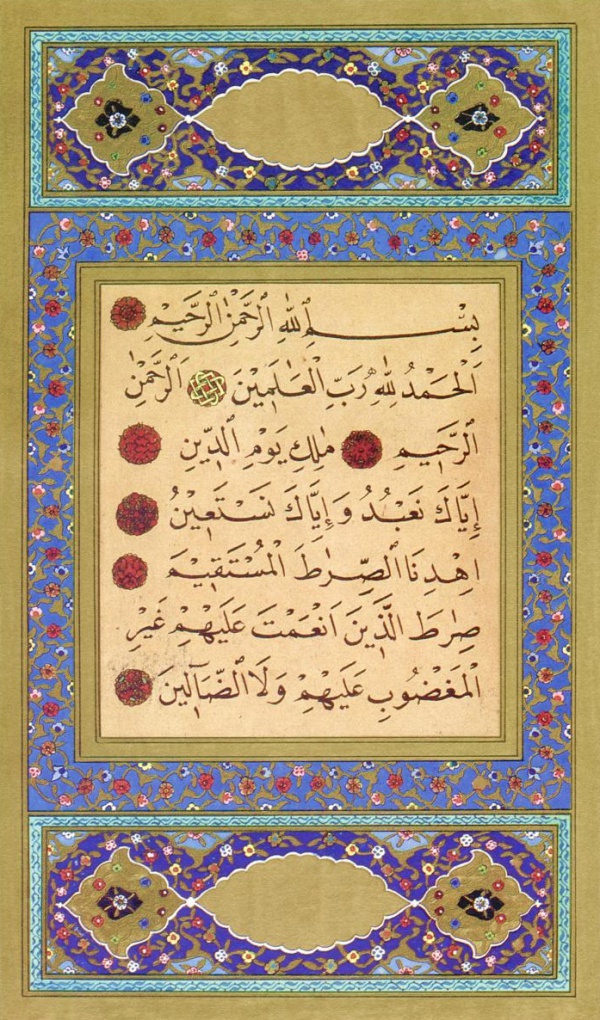
The first surah of the Qur'an written in the style of naskh/Public Domain
Several cursive styles were invented in Iran. Talik became one of the most popular among them, from which Nastaliq, another decorative style of writing, was developed. It is more beautiful, elegant and cursive form of writing. Ali Tabrizi became the inventor of this style. Thanks to his efforts, Nastaliq was the prevailing style of Persian calligraphy during the XV-XVI centuries.
Arabesques
The arabesque, an element of Islamic art, usually found in decoration of mosques and Muslim houses and buildings, is a complex application of repetitive geometrical forms that often repeat shapes of plants, figures and sometimes animals (birds in particular).
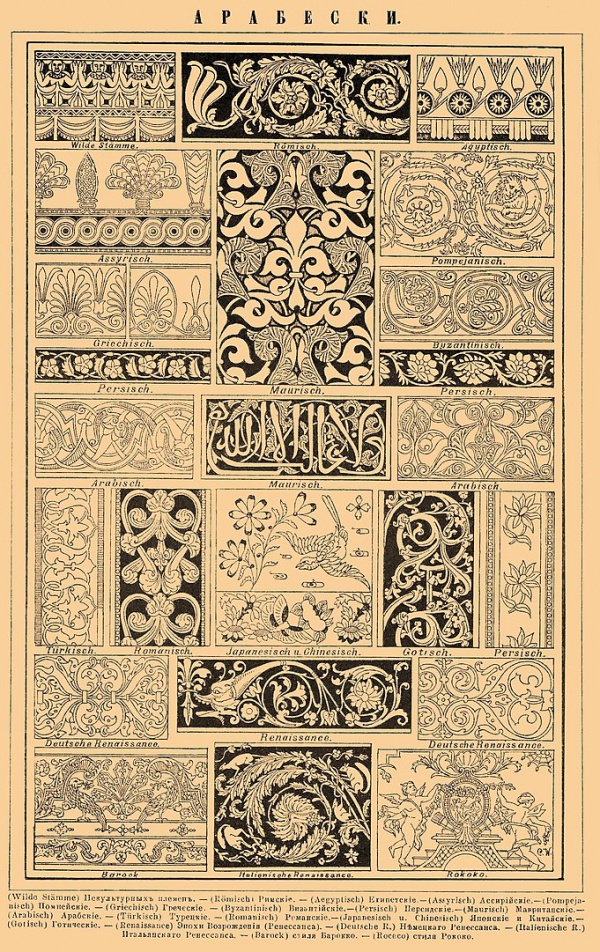
Arabesques/Public Domain
The choice of which geometrical forms should be used and how they should be formatted is based on the Islamic view of the world. For Muslims, these forms, taken together, represent an endless pattern that extends beyond the visible material world. For many people in the Islamic world, they actually symbolize the infinite and therefore non-centralized nature of one God’s work. In addition to it, Islamic arabesque conveys certain spirituality without the iconography of Christian art.
Arabesque is used in mosques and construction all over the Muslim world and this way of decorating with the use of beautiful and repetitive Islamic art has become a worthy alternative to the use of images of people and animals, which is not encouraged in Islam.
In the next article we will find out how European examples of architecture absorbed Islamic style, why Islamic architecture is so popular and whether its revival awaits today.
Ilmira Gafiyatullina
Photo in the slider: Creative Commons
